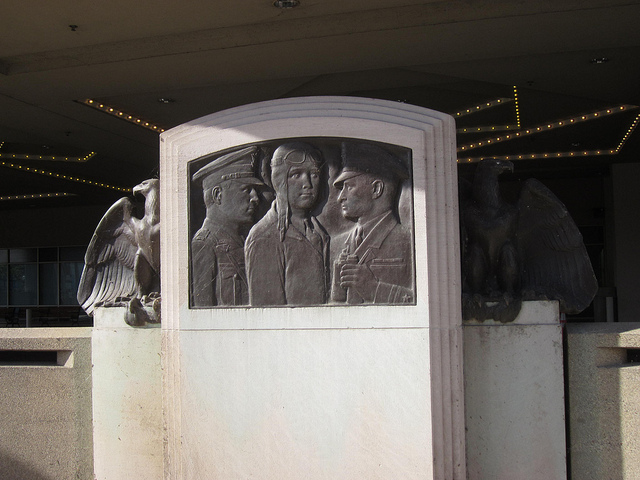The Story of Aurora Community Study Circles.
Last week a small but dedicated group of Chicago area dialogue & deliberation (D&D) practitioners traveled through a heavy snow storm to Aurora, IL to meet with Mary Jane Hollis, creator of the Aurora Community Study Circles (1996-2007). Our original goal was to learn about her approach to “dialogue across difference” related to race, ethnicity, and income inequality. We certainly did that. What none of us expected though was to discover how dramatically the city of Aurora as a whole had been transformed by public dialogue. While Portsmouth Listens now attracts international attention for its use of study circles for community empowerment, Aurora had in fact done something quite similar years earlier….and on Chicago’s own doorstep!
Mary Jane is known as an expert in race dialogue. Yet we were surprised to learn that she never discusses race directly. In fact, the programs she ran consciously avoided using words like “race dialogue” or “diversity training”. She said how the intent of the dialogue is framed is very important. People can become uncomfortable if they feel they’re being told what to think. In addition, such vocabulary tends to attract those already committed to inclusion (i.e., “preach to the choir”).
The Aurora community dialogue program was called “Circles of Understanding”. It identified community needs and how they’re met. Residents gathered simply as human beings to better understanding one another and especially what experiences, feelings, and values have shaped their lives and views. Race often emerged naturally an important factor. Sometimes other kinds of difference like disability or socioeconomic status or personal interests were more important. From a common base of mutual understanding and enhanced relationships, residents could then go on to effectively tackle potentially contentious public issues – like changing school district boundaries.
Each circle consisted of an average of 12 residents selected for maximum diversity (e.g., race, income, gender). Participants met for two hours once a week for five weeks, led by a trained facilitator using the flexible Everyday Democracy study circles method. At its height, 6-8 circles took place every quarter. They met at different times of day and days of the week to accommodate diverse schedules. To make people feel comfortable, only public meeting spaces like universities, schools, and community buildings were used, never homes. In fact, Aurora University was an important supporter, supplying both meeting space and sending faculty and staff to be trained as facilitators. Food contributed to the conviviality of the circles, brought either by the facilitator or participants. At the end of each quarter, people from all circles came together in a celebratory wrap-up session. Once a year, the program also organized a fun picnic in the park for everyone who’d been involved in a circle.
The tremendous impact of the Aurora Community Study Circles was driven by its longevity and reach. It began with “Circles of Understanding” among adults and then expanded into high schools and middle schools via the Many Young Voices program. These were supplemented by two Citywide Days of Dialogue with small conversations all over the city and a big community event in the evening, one of which included a film screening and discussion of Crash. During 11 years, Aurora Community Study Circles involved over 6,000 residents, out of a total population of nearly 200,000. From the very beginning, it was supported by an influential and diverse group of community leaders: from government, business, academia, religious institutions, philanthropy, media, etc. Participants were primarily recruited from within these community groups and referred to by the empowering term of “stakeholder”. In addition, all staff members of the local newspaper the Aurora Beacon News were themselves participants in study circles, ultimately transforming their approach to local journalism.
Having so many residents participate in community dialogues over many years created a “snowball effect”. Even people and organizations which had never been involved with the program were impacted. Ordinary meetings incorporated principles of good dialogue. When a contentious issue arose, for example within a school board, residents created their own study circle-inspired processes to address it. Informally, in a myriad of daily interactions, differences which could have escalated into violent conflict were resolved civilly as residents recalled earlier discussions with people different from themselves. When the program started in 1996, there were 26 murders in Aurora and multiple complaints of human rights violations. Last year, there were none.
Sustaining funding over the long-term, however, proved a challenge. Funders like to support innovative, short-term projects. Yet community change takes time. In addition, although there is considerable anecdotal evidence that the program transformed Aurora, it is difficult to prove this quantitatively or demonstrate concrete outcomes, as funders demand. In 2007, a combination of financial and personal factors led to the dissolution of Aurora Community Study Circles.
Mary Jane’s greatest regret was the end of the school-based program Many Young Voices. She sees youth, starting in middle school, as the people most in need of training in and experience with civil dialogue. In school, young people are not often recognized as individuals and so don’t learn to value (or even how to understand) their own perspective, let alone those of people who differ from themselves. Without such skills, bullying can take hold and simple conflicts escalate to violence. Furthermore, without experience with collaborative approaches to transform conflict, youth may as adults perpetuate destructive adversarial approaches in politics, law, business, and community.
Although Aurora Community Study Circles disbanded in 2007, Mary Jane is keen to continue this work, especially Many Young Voices (MYV). She sees great potential, for example, in expanding this program into more middle schools, as well as perhaps using it with youth in the juvenile detention system. To discuss the possibility of using the MYV materials, scheduling training, or working in partnership, Mary Jane Hollis may be reached at mjhollis1@aol.com.
Photo: Doug Kerr, monument in Aurora, Illinois
